Learn how to make homemade hummus with this simple recipe. You can make it for an appetizer or snack, as dip or spread, and have it in the fridge for the week.
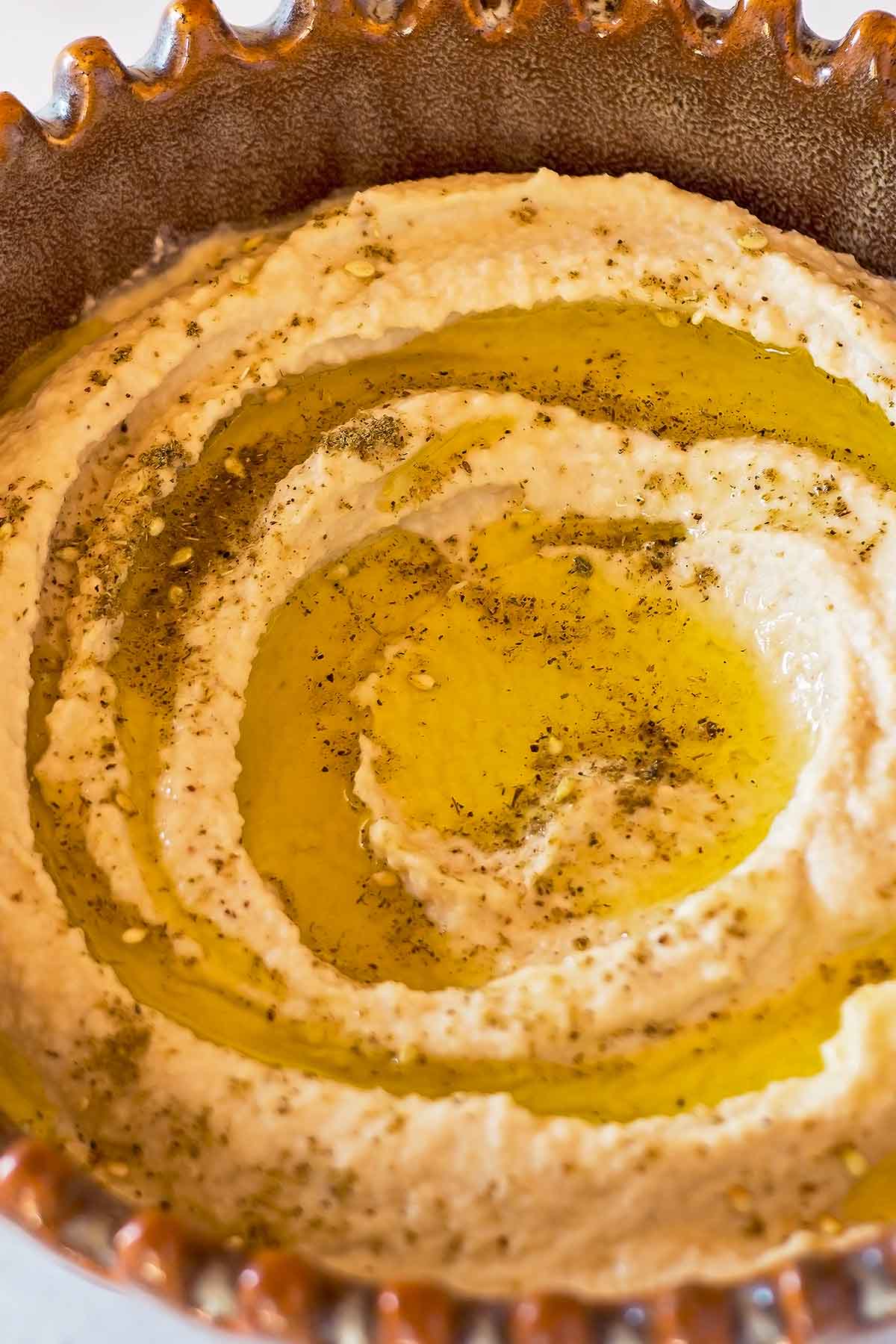
What is Hummus?
Hummus is a delightfully creamy dip that originated in the Middle East made from chickpeas, tahini, lemon juice, garlic, salt, and olive oil. Frequently, it will have a garnish as well such as whole chickpeas, paprika, or fresh herbs as well.
Hummus is often eaten with pita bread, crackers, baguette slices, and sliced raw vegetables. However, it may also be served as part of a mezze or alongside other dishes like fish, meat, and falafel.
Today, hummus has gained popularity in many parts of the world and may include some variations. Rather than using chickpeas some people might use cooked lentils or white beans instead. Additionally, you can incorporate different ingredients into the mixture such as caramelized onions, roasted garlic, roasted beets, roasted red peppers, or even sundried tomatoes.
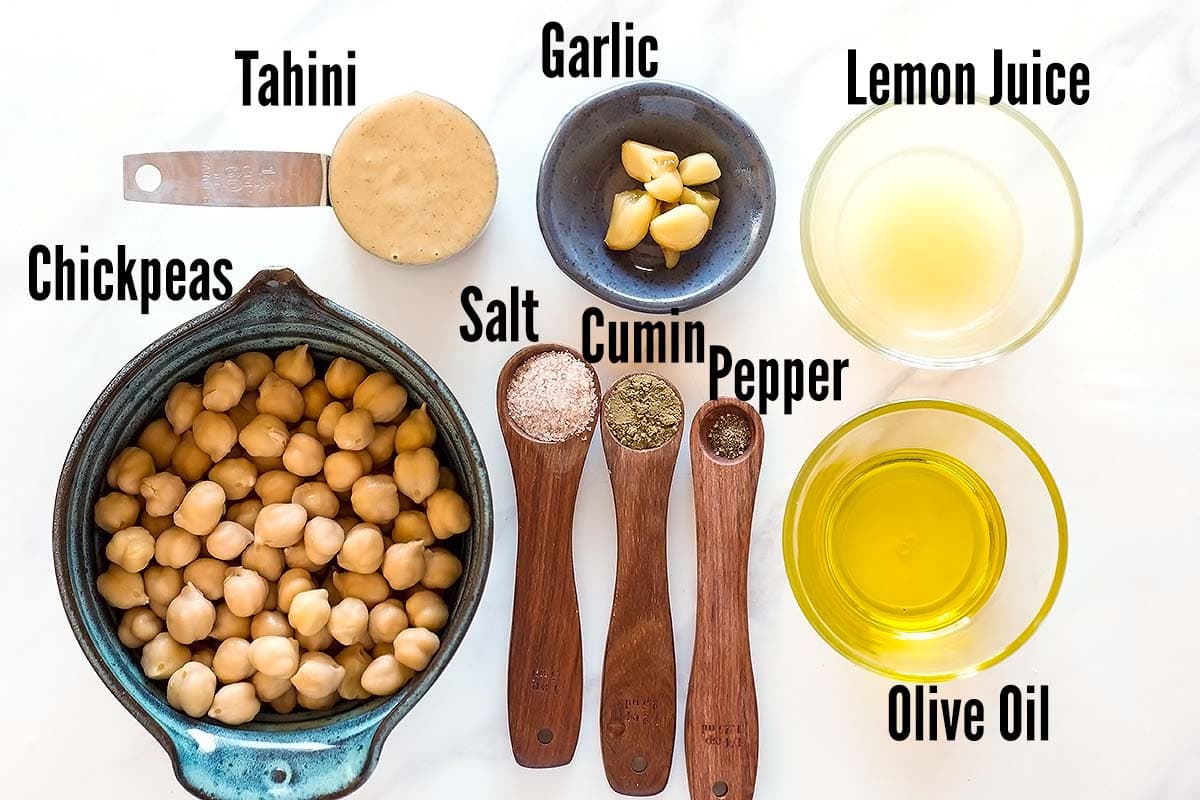
Ingredients
The most classic version of hummus includes cooked chickpeas (canned or home cooked), lemon juice, garlic, salt, and olive oil with some whole chickpeas on top for a garnish and some texture. My from scratch hummus recipe calls for roasted garlic cloves and ground cumin in the mixture for flavour. This recipe is a great base version to have as it is or add other ingredients to make all your own.
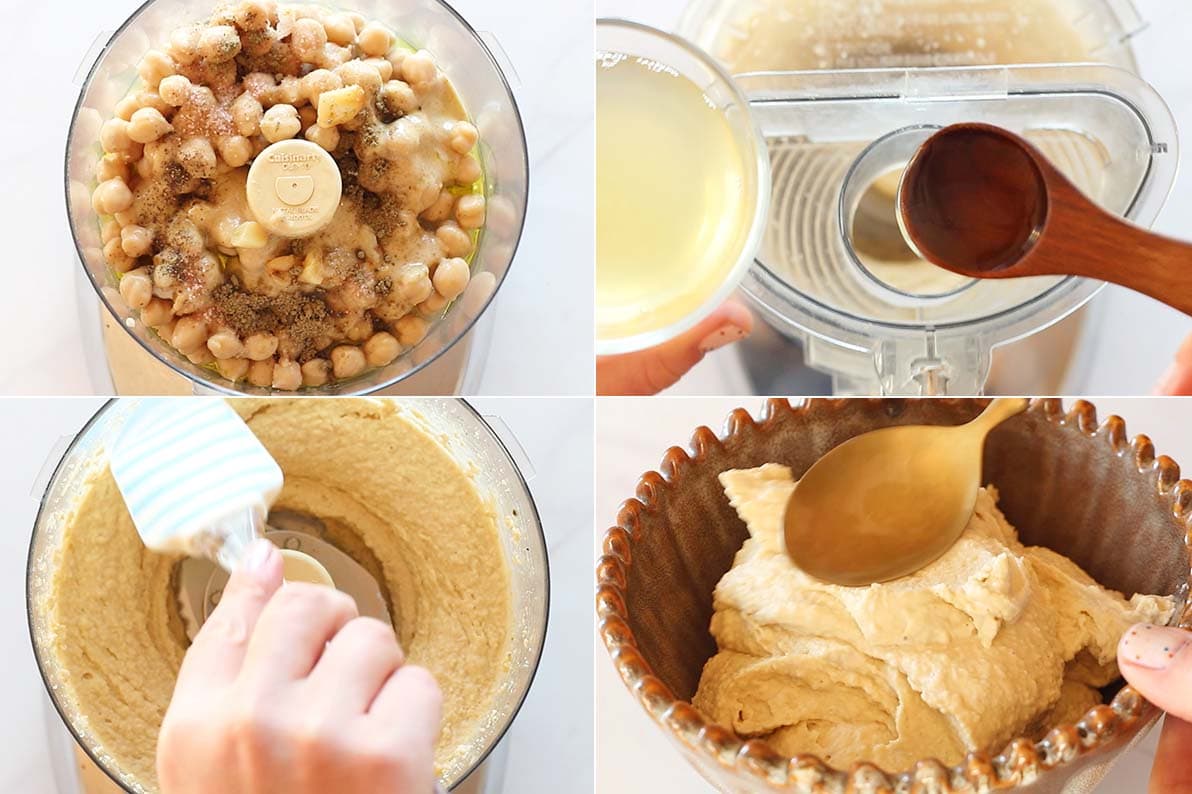
How to Make Homemade Hummus
1. Anyone can make homemade hummus easily if they have a food processor. To make it, simply add a standard-sized can of chickpeas (reserving a few whole chickpeas for the top, as well as some chickpea liquid) in the food processor with the roasted garlic, tahini, lemon juice, olive oil, salt, and pepper.
2. Then, pulse it until the mixture is completely smooth, blended, and combined. The mixture may be quite thick at this point so you can add some of the chickpea liquid or simple water to the hummus one spoon at a time until it is to the desired consistency.
3. Stop the food processor as needed to scrape down the sides with a spatula to ensure all the ingredients get incorporated smooth and evenly. You can taste the mixture and add more lemon, garlic, or salt as needed until it reaches your taste.
4. To serve the hummus, place it in a pretty serving bowl and drizzle it with some olive oil. This not just looks nice ut also keeps the hummus surface rom drying out. You can decorate the top with a few whole chickpeas. Or dust it with some paprika if you like. If you have a small fine-mesh strainer, you can spoon a little paprika powder into it to dust it over the hummus to ensure even coverage. Another nice garnish you could put on homemade hummus is za'atar (pictured in this post), which is a Middle Eastern spice blend. It frequently includes marjoram, thyme, sesame seeds, sumac, and thyme, and can add an earthy herbal note to whatever you add it to. Of course, you could also top the hummus with some fresh parsley or cilantro for some bright colour as well.
The mixture will keep covered in the fridge for up to 5 days. If you like, you could place it in an airtight container with a lid for easy storage or if you have it in a serving bowl, cover it with a cloth bowl cover or a tea towel fastened with an elastic band to reduce the use of plastic wrap.
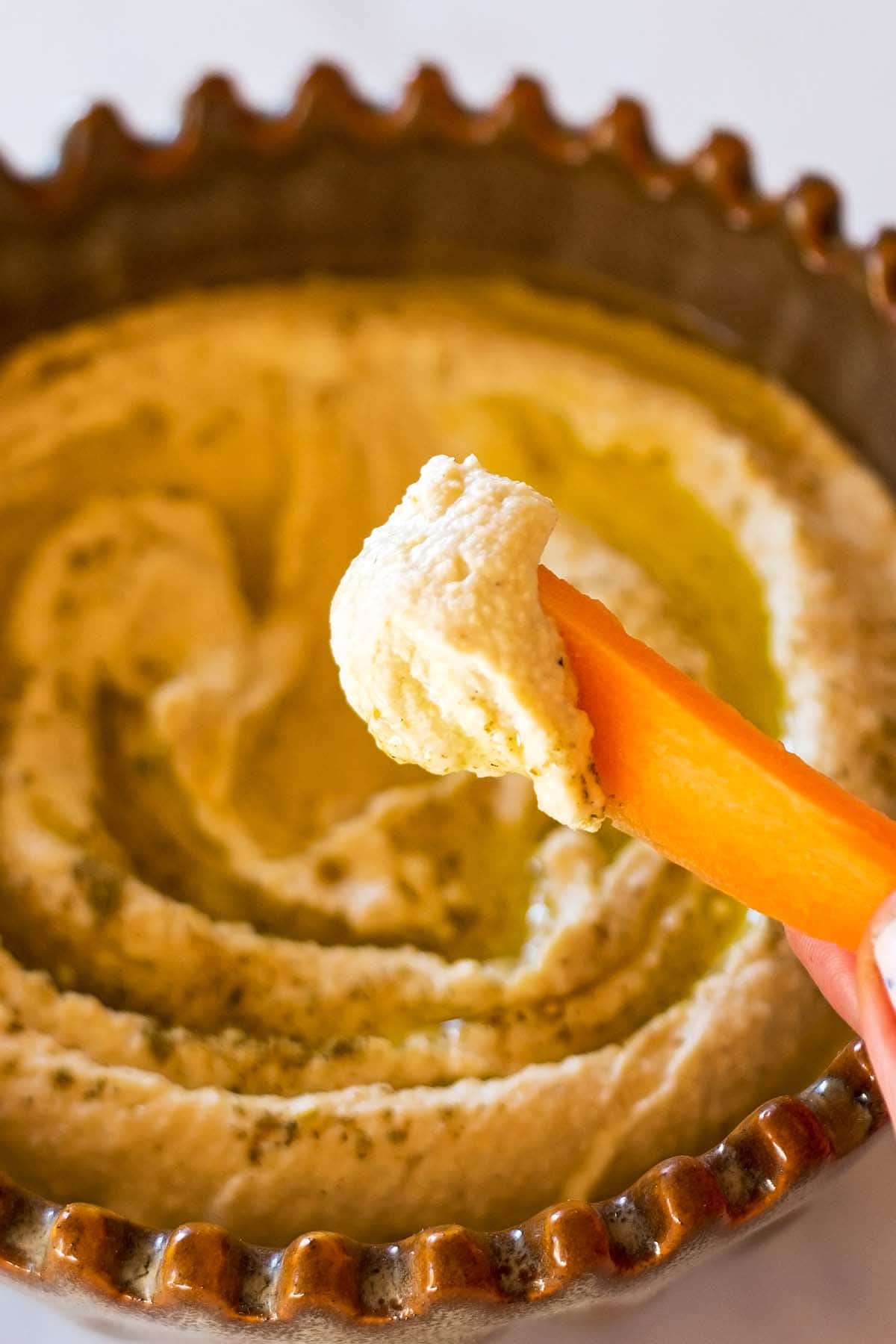
How to Make Homemade Hummus Creamier
While canned chickpeas make a relatively creamy hummus already, you can make it even creamier with an extra step. Before adding the chickpeas to the food processor, drain them through a colander. Then, you can rinse them with water while brushing their skins off with your hands. The removal of the majority of the skins should allow your hummus to become extra smooth and creamy.
However, there is another option if removing all the skins seems too daunting. Alternatively, you can add the chickpeas (canned or home cooked) to a saucepan with their liquid or some water. Then cook them for an extra 10-20 minutes until they are very soft and mushy. Mushy chickpeas will break down into extra smooth hummus in no time.
Variations
After you have made several batches of hummus, you may decide you would like to try some different flavours. Here are some hummus variations you can use:
- Try adding a roasted beet to the hummus mixture.
- Make a roasted red pepper hummus with the additions of paprika and roasted red pepper.
- Fold chopped fresh herbs into the hummus once blended.
- Blend some spiced roasted cauliflower into the hummus and place some on top finely chopped.
- Use up extra pumpkin puree to make pumpkin hummus.
- Blend in some ripe avocado for extra creamy avocado hummus.
- Top the hummus with Mediterranean ingredients like feta cheese, grape tomatoes, red onion, parsley, and kalamata olives.

How to Serve Homemade Hummus
While a delicious way of eating hummus is with everything from pita bread, pita chips, and crackers to veggies, there are other ways to have it. Here are some ideas:
- Spread it on a sandwich with a roasted portobello mushroom, spinach, and roasted red pepper.
- Dollop it on top of a grain bowl with falafel.
- Blend it with a little more olive oil and fresh lemon juice to drizzle over a green salad for a dressing.
- Stir into your tuna salad instead of the usual mayonnaise.
- Have it as a dip with potato chips.
- Add it to your deviled egg mixture for an intriguing twist.
Random Questions
Absolutely! Homemade hummus allows you to control the ingredients, customize flavors, and enjoy a fresher, creamier dip.
Blend cooked chickpeas, roasted garlic, tahini, lemon juice, olive oil, salt, and pepper in a food processor. Adjust consistency with chickpea liquid or water.
Substitute almond butter, sunflower seed butter, or even Greek yogurt for a different twist on flavor and texture.
Traditional hummus consists of chickpeas, tahini, lemon juice, garlic, salt, and olive oil. Garnishes like whole chickpeas, paprika, or fresh herbs are common.
Other Hummus Recipes You'll Love:
Recipe
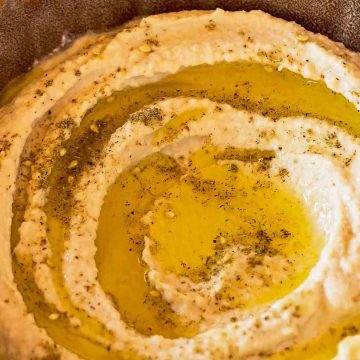
Homemade Hummus Recipe
Ingredients
Instructions
- Drain the chickpeas but reserve some of the liquid. Optionally, reserve a few chickpeas for a topping later.
- Place chickpeas in a food processor together with garlic, tahini, lemon juice, olive oil, cumin, salt, and pepper.
- Process everything until smooth. Scrape down the sides as necessary. If the mixture seems too dry, add a little of the reserved chickpea liquid, 1 tablespoon at a time.
- Transfer the finished homemade hummus to a serving bowl and drizzle the top with a little olive oil. Top with a few whole chickpeas for decoration, or sprinkle with some za'atar or paprika powder.
- Store homemade hummus covered in the fridge for 3-5 days.
Nutrition
Pin for later?
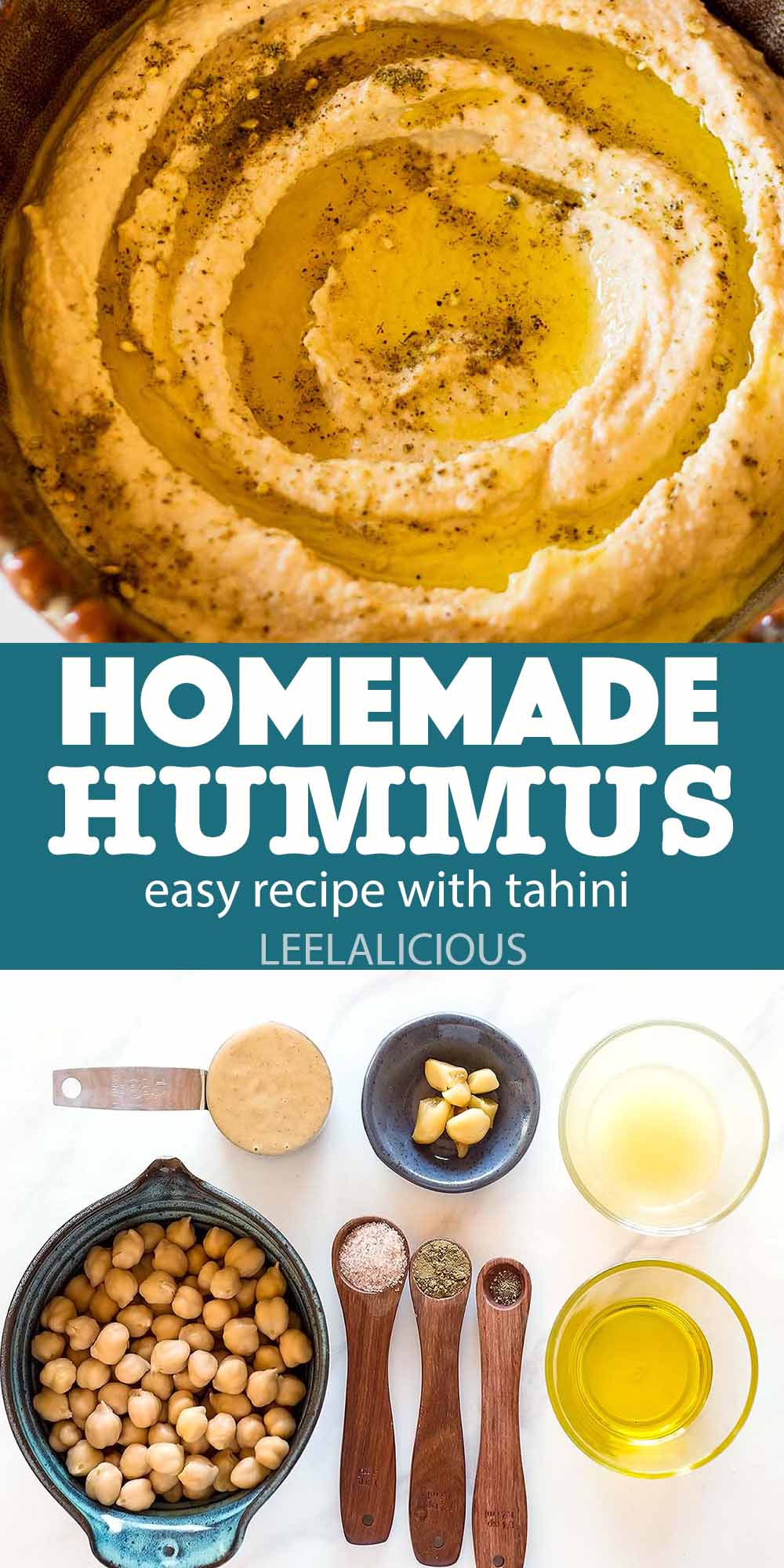




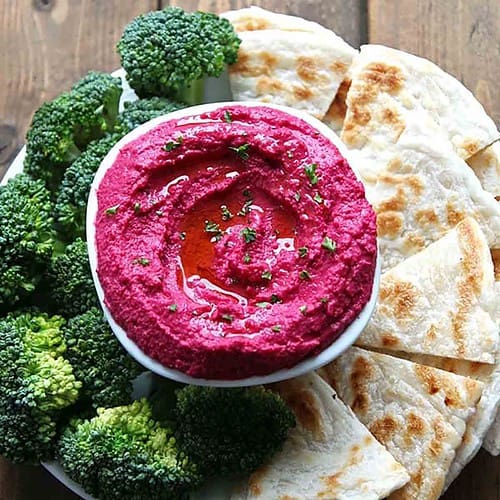
Leave a Reply